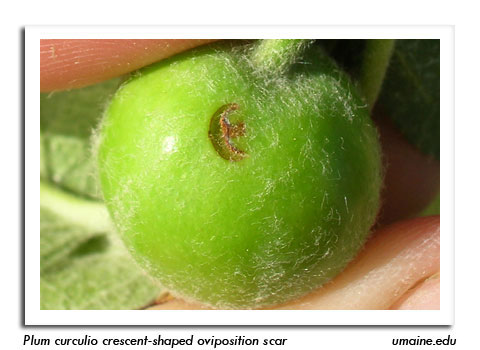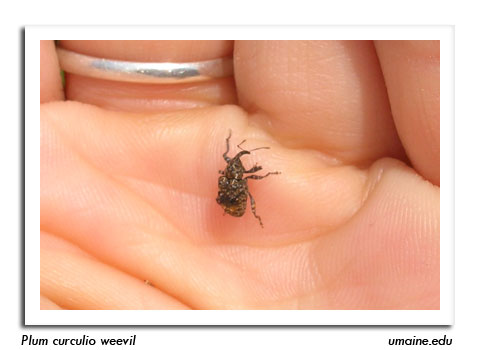
 |
|
|
Fruits
Volume 57 Number 21 Date 11/08/2012 SPOTTED WING DROSOPHILA - This newly introduced, invasive pest of Asian origin emerged in record numbers this fall. Infestations were confirmed in 11 counties and suspected in another seven, ranging from Dane County in the south to Bayfield in the far north. The current known distribution in Wisconsin includes the counties of Bayfield, Brown, Crawford, Dane, Door, Fond du Lac, Marinette, Monroe, Pierce, Racine, Vernon, Winnebago and Wood, for a total of 13 confirmed counties since SWD was first identified in the state in 2010. In the years 2010 and 2011, the detections were the result of deploying vinegar traps in orchards. By contrast, nearly all of the new cases in 2012 were reported by fruit growers who observed larvae in their blackberry and raspberry plantings. The abundance of SWD this season was likely influenced by spring weather patterns that carried large numbers of flies into the state. CODLING MOTH - Moths began appearing in traps from April 18-May 2. Low nightly temperatures suppressed flights shortly afterward, making it difficult for growers to determine the biofix date and schedule subsequent controls. The spring biofix was set from May 3-17 at most southern and central Wisconsin sites and a distinct 'B' peak was noted around mid-June. Summer moths emerged in early July and treatments were applied during the last two weeks of the month. At most orchard locations, the second flight was smaller but lengthier than the first and extended until late August. A partial third flight was noted at a few sites in early September. PLUM CURCULIO -The spring migration of beetles into orchards began by mid-April and the first oviposition scars were observed before the end of the month. Beetle activity intensified from May 4-17. Consecutive frosts and freezes in April significantly reduced fruit set, forcing the beetles to migrate farther into the interiors of orchards in search of oviposition sites, which impacted control strategies that normally target perimeter trees. The migration period ended by May 24 across southern Wisconsin. APPLE MAGGOT - The first flies of the season appeared from June 7-13, approximately three weeks earlier than in 2011. Dry soils inhibited fly emergence during the rest of the month and trap counts remained very low through mid-July. Emergence resumed after a few scattered light rains and peaked from late July through mid-August, although counts were not particularly high. The delay led to a flush of adults at some sites in late August but significant late-season injury to apples was not reported. Many growers applied their last spray of the season by the third week of August with the expectation of reduced fly activity by early September. FROST/FREEZE DAMAGE - Abnormally warm weather in March, followed by several frost events in April and early May decimated the state's apple crop in 2012. An informal survey of the 32 growers included in the DATCP apple pest monitoring program estimated losses ranging from 40-90%, with an average of 75%. In addition to frost damage, summer hail storms and drought further ravaged the apple harvest, which was the smallest in recent memory. As a result, apple prices increased to $1.50-$3.50 per pound this fall depending on the variety, many pick-your-own operations were suspended and the most desirable varieties such as 'Honeycrisp' were scarce. -- Krista Hamilton, DATCP Entomologist 





|
|
|